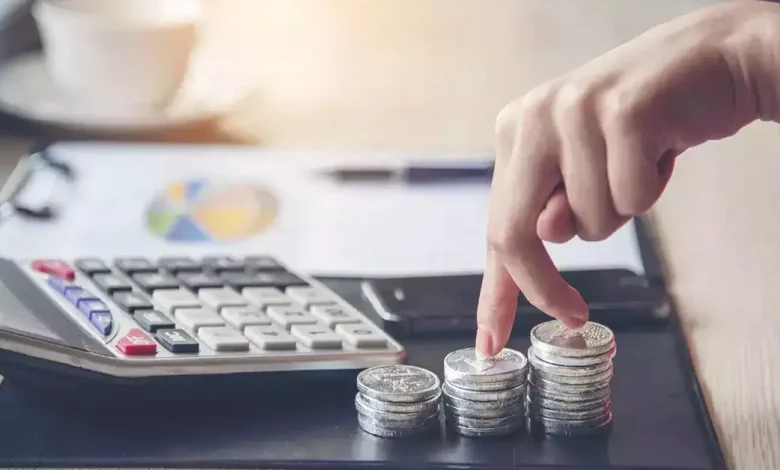
Context- Dealing with the huge public debt poses a big challenge for the government.
About the Public Debt
- It is also referred to as Sovereign Debt, and sometimes National Debt, an important manner for governments to finance investments in growth and improvement.
- It is typically the quantity of debt that a central government has accumulated over many years of running fiscal deficits and borrowing to bridge the deficits.
- It consists of the budgetary central government, state and local government, extrabudgetary units, and social protection finances and so forth plus other liabilities, which includes against small financial savings schemes, provident budget and unique securities issued to the Food Corporation of India, fertiliser corporations and oil advertising and marketing organizations.
- Public debt is taken into consideration whilst the government’s expenditure exceeds its revenues, leading to borrowing or selling belongings to fund the deficit.
- The economic deficit target (gap between the government’s revenue and prices) is frequently expressed as a percent of the gross domestic product (GDP).
Current Status (India)
- India’s public debt-to-GDP ratio has barely multiplied from 81% in 2005-06 to 84% in 2021-22, and is back to 81% in 2022-23.
- It was at 75% in 2019-20 and peaked at 88.5% in 2020-21.
- As in step with the Fiscal Responsibility and Budget Management (FRBM) Act 2003, the general government debt was pre supposed to be added right down to 60% of GDP through 2024-25.
- The Centre’s personal general high-quality liabilities were now not to exceed 40% within that time agenda.
- The IMF states that India’s widespread government debt, along with the Centre and States, can be one hundred% of GDP below adverse occasions by using financial 2028.
- It has projected the ratio at 82% in the modern-day economic and eighty two.Four% for 2024-25.
Global Status of Debt
- Global public debt tripled in the mid-Seventies to attain 92% of GDP (or simply above $91 trillion) via cease-2022.
- Private debt additionally tripled to 146% of GDP (or close to $144 trillion), however over a longer time span between 1960 and 2022.
- Over the past decade, the upward push in the outside debt inventory of low- and middle-income countries has outpaced economic growth.
Reasons for High Public Debt
- High Borrowings: Governments borrow to meet various expenditures that they are not able to satisfy through tax and other revenues.
- Governments may additionally borrow to pay interest on the cash that they’ve already borrowed to fund past expenditures.
- Public debt in India is basically contracted at fixed interest costs, with floating internal debt constituting only 1.9% of GDP at give up-March 2022.
- Expenditure related to Public Health and Social Safety: The maximum obvious motive is the Covid-triggered disruptions that pressured governments to borrow extra – to fund additional public health and social safety net expenditure requirements – amid a drying up of revenues.
- High Inflation: Despite the economic growth rebound from 2020 and much better-than-predicted inflation, public debt remained excessive.
- Fiscal deficits kept public debt tiers improved, as many governments spent greater to reinforce growth and reply to meals and strength fee spikes at the same time as they ended pandemic-related economic help.
- Declining Tax Revenue: A major chunk of expenses (interest payments, pensions, administrative expenses and so on.,) and growing subsidy burdens meant that States have been overly dependent on Central transfers.
- A decline in revenue and a growth in spending meant a sharp rise in debt.
Impacts
- On economic development: High public debt can act as a drag on development because of restrained access to financing, growing borrowing expenses, forex devaluations, and slow boom.
- Government debt exceeding threshold ranges exert upward pressures on the term top class and dampen growth.
- According to the United Nations, countries are going through the impossible desire of servicing their debt or serving their people.
- Low quality of expenditure: In 2022, 3.3 billion human beings live in nations that spend more on interest payments than on education or health.
- High public debt can lessen investment and capital accumulation because of pressure on lengthy-term interest rates.
Efforts for Minimizing the High Public Debt
- Fiscal consolidation: This entails decreasing the fiscal deficit and public debt. The government can gain this through increasing revenues or decreasing spending.
- The government has opted for a new extensive ‘flow route’ of fiscal consolidation. It aims to attain a financial deficit-to-GDP ratio of ‘under 4.5%’ by 2025-26.
- But given the excessive submit-pandemic beginning factors in 2020-21 and 2021-22, the deficit ratios of 6.4%, 5.8%, 5.1% (Budget Estimate), and ‘below 4.5%’ for the subsequent four years amount to fairly sharp discounts.
- Structural reforms: These are modifications in economic, financial, or exchange policies to improve the functioning of the financial system. They can help increase financial growth and decrease public debt.
- economic coverage: The vital financial institution can use economic coverage to manipulate inflation and stabilise the financial system, that can in a roundabout way assist reduce public debt.
- The IMF recommended that India needs extra prudent management of debt within the medium time period.
- It also suggested that new and ideally concessional sources of financing are wanted, in addition to extra private sector funding and carbon pricing or an equal mechanism.
- Public Debt Management: It is a key function of the Department of Economic Affairs, Ministry of Finance.
- The division handles coordination, compilation, and printing of the Detailed Demands for Grants and the Outcome Budget.
Way Forward
- For restoring and recreating a policy environment conducive for non-public area-led growth publish-COVID, timely rebalancing of financial and economic guidelines might also become necessary given the modern configurations of debt and liquidity.
- India possibly wishes a aggregate of each fiscal consolidation and growth (from output more than inflation) to cope with its current debt burden.
Source: Indian Express





.png)



